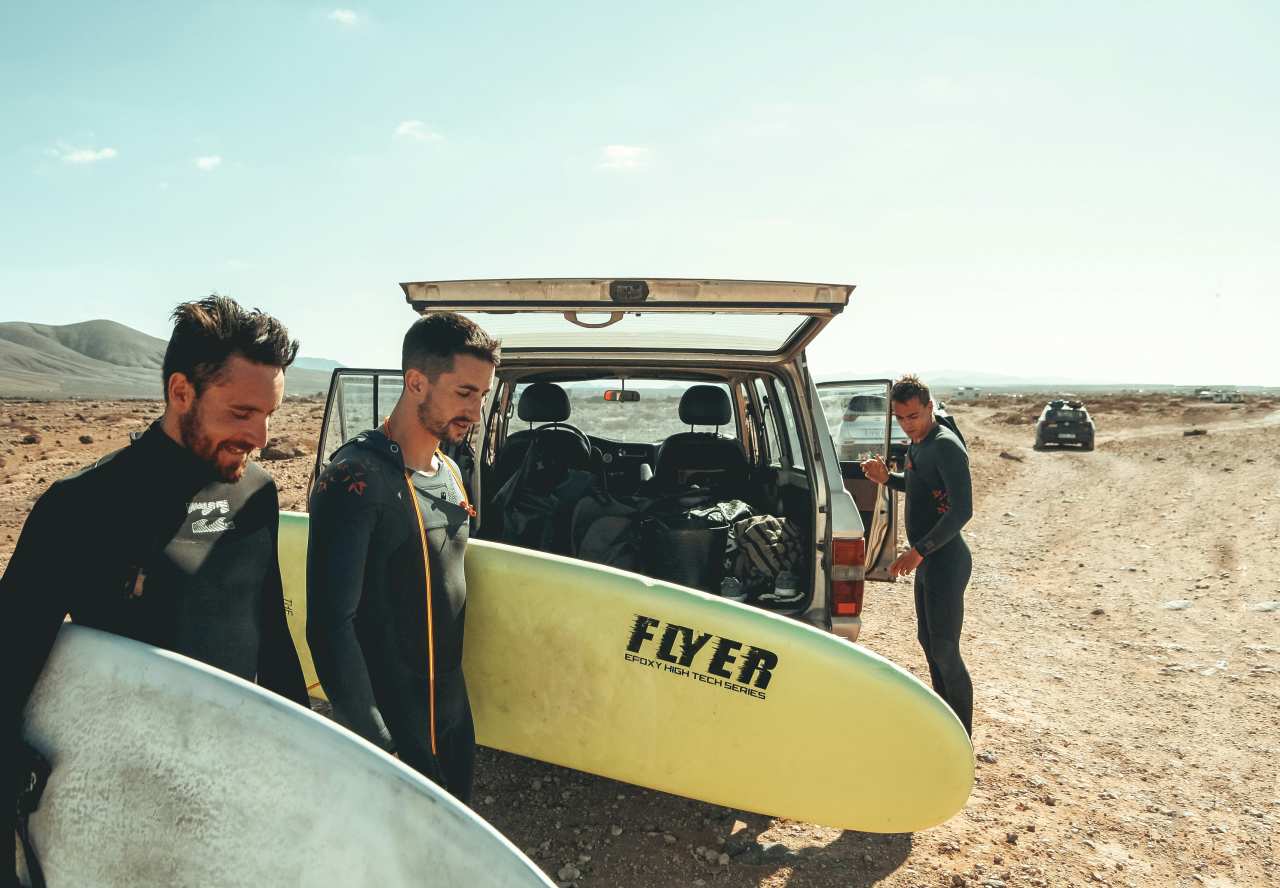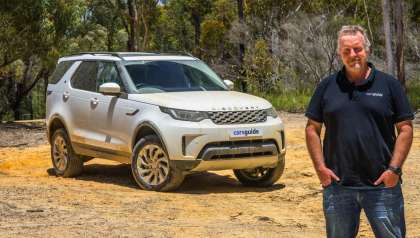The Jeep Grand Cherokee has had its share of fans who use theirs as a tow vehicle, but with most of the new-generation line-up effectively losing 700kg in maximum towing capacity from the previous-gen versions will this still be the case?
And the story doesn’t get any better if you spend more money and move into the upper echelons of the new ranks either: the top-spec seven-seater L Summit Reserve has a towing capacity of 2268kg.
So, taking that substantial loss of functionality into account can the new Grand Cherokee retain any favour with buyers?
Read on.
Jeep Grand Cherokee 2023: Summit Reserve (4X4)
| Engine Type | V6, 3.6L |
|---|---|
| Fuel Type | Premium Unleaded Petrol |
| Fuel Efficiency | 10.6L/100km (combined) |
| Seating | 7 |
| Price From | $109,560 - $125,950 |
| Safety Rating |
|
Does it represent good value for the price? What features does it come with?
The long-wheelbase Jeep Grand Cherokee L Summit Reserve has an MSRP of $115,450.
Our test vehicle also had premium paint (Silver Zynith, $1750), and the Advanced Technology Group option* (including Head Up Display, Wireless Charging Pad, Night Vision/Ped-Animal Detection, $5500), pushing its as-tested price to $122,700, not including on-road costs. (* Our test vehicle was an early production example and, as such, was not fitted with the Front Passenger Interactive Display, which is part of the Advanced Technology Group option pack. All customer units will feature the display with that option pack, according to Jeep officials.)
Standard features include a 10.1-inch multimedia touch-screen, 10.25-inch digital instrument cluster, a 19-speaker, 950-watt Premium McIntosh high-performance audio system, Quilted Palermo leather-trimmed seats, driver and front passenger seat massage function, four-zone automatic climate control, dual-pane panoramic sunroof, hands-free power liftgate, 21-inch alloy wheels, as well as height-adjustable air suspension and a stack more.
Is there anything interesting about its design?
If you’ve read any of my reviews you know I don’t waste your time or mine waxing lyrical about the look of a vehicle, interior or exterior.
Style and appearance is entirely subjective.
In my opinion, this Jeep looks pretty good … in a generic SUV kind of way. It’s fine. Take a look, drink it in, make up your own mind.
Be an adult.
Have fun with that.
.jpg)

How practical is the space inside?
It’s all rather family-friendly inside.
Upfront there are storage spaces aplenty (bottle holders in the doors, cup holders in the centre console, a two-level storage box between driver and front passenger, and glove box etc), as well as easy access to the multimedia screen, which is a bit clunky in its operation with a combination of on-screen buttons and actual buttons and dials.
In terms of charge points, there is a covered wireless charging bay in front of the auto shifter, USB-A and USB-C ports (two of each), a 12V socket and an auxiliary outlet.
In the 40/20/40 split second row, passengers get ample headroom and legroom and access to bottle holders in the doors, setback map pockets, a fold-down centre armrest with two cupholders, as well as ventilation control.
There are dual USB-A and USB-C ports and a 230-volt AC socket.
In the 50/50 split third row, it’s actually pleasant rather than painful, once you’ve rolled and folded the second-row seats out of the way so you can actually climb into the vehicle.
There’s sufficient head- and legroom back there, and the two third-row occupants have access to bottle holders, adjustable ventilation, small storage pockets, and USB charge points.
The rear cargo space is listed as 487 litres (that’s with all seats in use) and has several tie-down points and a 12V outlet. That space grows to 1328L with the third row down; and 2395L, with the second and third rows out of the way and not in use.
In general, there’s a reasonable amount of flexibility to the interior in terms of passenger-carrying and packability in that the doors can be opened wide and the second-row seats can be moved forwards and backwards and folded away to help the interior configuration or with passenger ingress or egress. However, we couldn’t get the second-row seats to fold flat to the floor, which is far from ideal when it comes time to load that space with gear for a weekend away or an extended camping trip.
A tech function which I didn’t use but others might find handy is the ‘Fam Cam’ (standard on the Summit Reserve). That’s an adjustable rear seat monitoring camera so you can keep an eye on the second- and third-row occupants without twisting around and saying stuff to your naughty kids like: “Don’t make me turn this car around and go home!”
I also didn’t bother testing this Jeep’s Night Vision which is claimed to reveal stuff like your hot diffs but also, more importantly, highlight pedestrians and animals at night. Maybe I’m more than a little bit old-fashioned, but how about simply staying alert and using your eyes.
What are the key stats for the engine and transmission?
The Grand Cherokee has a 3.6-litre naturally-aspirated V6 petrol engine, which produces 210kW at 6400rpm and 344Nm at 4000rpm.
.jpg)
It has an eight-speed automatic transmission and Jeep’s full-time 4WD system, Quadra-Trac II 4x4.
The Summit Reserve variant has a low-range transfer case and height-adjustable air suspension, which has five settings: Normal, Off-road 1 (40mm lift over Normal), Off-road 2 (60mm lift), Park (46mm lower), and Aero (21mm lower).
What's it like as a daily driver?
This Jeep is 5204mm long (with a 3091mm wheelbase), 2149mm wide and 1817mm high. It has a listed tare weight of 2270kg.
This is a beefy seven-seater so you shouldn’t climb into it expecting a dynamic driving experience, but…
First, the positives: this is a big comfortable vehicle with lots to like about its premium-feeling interior.
The seats are comfortable and supportive, especially upfront for those partial to a bit of massage.
.jpg)
Driving position is high and commanding with clear vision in most directions.
The eight-speed auto is generally clever and smooth, but if you think you can do better then you can always use the steering-wheel-mounted paddles if you get the urge.
Now, for the negatives: this Jeep never felt stable or settled or controlled on the road. It was very floaty on sealed surfaces at most speeds, almost wallowing its way around.
Switching between Auto and Sport on-road drive modes and adjusting the height-adjustable air suspension in an attempt to tighten up that body control could never adequately address the strife.
.jpg)
Another thing: this Grand Cherokee feels underpowered and that’s a surprise because the Pentastar V6 is an engine with sufficient cred in Jeeps.
While peak torque is on tap across a nice rev range – 1800-6400 rpm – this engine just feels on the wrong side of wheezy here.
Also, the brakes – ventilated discs all round – feel spongy with a real delayed-action sensation before they actually bite.
All in all, this Grand Cherokee just doesn’t feel right on the road.
What's it like for touring?
Well, while it seems better suited to open-road driving than it does anything beyond light-duty 4WDing, its disappointing performance on-road didn’t bode well for our off-road testing.
In cold, hard figures: approach angle is listed as “up to 28.2” degrees, and departure angle as “up to 23.6” degrees. No rampover angle is listed. It has a listed 215mm of ground clearance and a wading depth that is noted as “up to 610mm”.
Really, there’s a long tradition of 4x4 prowess infused into the Jeep brand (think Wrangler Rubicon etc), but this Grand Cherokee feels too wishy-washy to rely on in tough 4WDing territory.
.jpg)
And all of the off-road tech at hand in this Jeep should instill the driver with extra confidence in the vehicle’s off-road abilities but it doesn’t.
Sure, you can dial-in extra ground clearance via the air suspension (it gains an extra 60mm in Off-road 2) and adjust torque split to the front and rear axles via the Selec-Terrain system’s off-road settings – Rock, Sand/Mud, Snow – but when bush comes to dirty shove the Grand Cherokee never feels at home off-road; it never feels at ease in any rough-terrain scenario.
Another blow to any appeal it might have otherwise retained as a touring vehicle is the drastic reduction in maximum braked towing capacity, from 3500kg to 2268kg. So, this Grand Cherokee has suffered a big punch in the guts to whatever bush-cred it may have previously had as a touring and towing platform.
.jpg)
In better news, it does have an 18-inch steel rim spare.
Despite a few positives, this is an SUV that should stick to the urban jungle.
How much fuel does it consume?
This petrol Jeep has an official fuel-consumption figure of 10.6L/100km (combined cycle).
On test, we recorded 12.34L/100km from fill to fill.
The Jeep Grand Cherokee L Summit Reserve has a 104-litre fuel tank so, going by those fuel figures, you can reasonably expect a touring distance of about 812km that’s after removing a 30km safe-distance buffer from the total figure (842km).
Warranty & Safety Rating
What safety equipment is fitted? What safety rating?
The Grand Cherokee does not have an ANCAP safety rating because it has not yet been tested.
It has eight airbags (dual front, front side, front knee, and full-length side-curtain), as well as a stack of driver-assist safety tech including AEB (with cyclist and pedestrian detection), lane keep assist, adaptive cruise control, blind-spot monitoring, rear cross-traffic alert, traffic sign recognition, a tyre pressure monitoring system, a 360-degree camera, parallel and perpendicular park assist and more.
The second row has three child-seat top tether points and three ISOFIX child-seat anchors; both third-row seats have child-seat top tether points.
.jpg)
What does it cost to own? What warranty is offered?
The Grand Cherokee is covered by a five-year/100,000km warranty, and that’s obviously not as good as the market standard of unlimited kilometres.
Owners receive 12 months of roadside assistance and that coverage is renewed annually when an authorised Jeep dealer undertakes your Grand Cherokee’s servicing.
Service is recommended every 12 months or 12,000km, and capped price servicing is available for $399 annually for the first five years.
_0.jpg)
Verdict
This Grand Cherokee is a disappointment.
It’s a peculiar vehicle: it’s not built for towing, it’s not built for off-roading, and it kind of operates in a niche realm that other rivals more successfully occupy and they do it at lower price-points.
This Jeep is a seven-seater, sure, but other cheaper vehicles do the required people-moving shenanigans better than this.
What’s more, it’s overpriced and underwhelming. The tech and swish interior aren’t enough to save the Grand Cherokee from itself.
Maybe this was a dud off the production line and other examples of this variant are more impressive … but I don’t think that’s the case.
Pricing Guides




.jpg)

_0.jpg)
_0.jpg)
_0.jpg)
_0.jpg)
_0.jpg)
_0.jpg)
_0.jpg)
_0.jpg)
_0.jpg)
_0.jpg)
_0.jpg)
_0.jpg)
.jpg)
.jpg)
.jpg)
.jpg)
.jpg)
.jpg)
.jpg)
.jpg)
.jpg)
.jpg)
.jpg)
.jpg)
.jpg)
.jpg)

































.jpg)
.jpg)
.jpg)
.jpg)
.jpg)
.jpg)




.jpg)

Comments